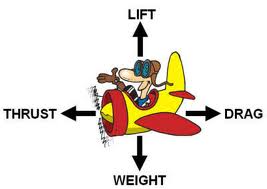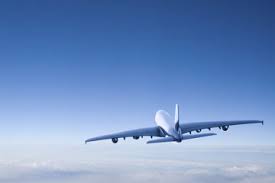A lot of us flew once to a far country, but have you ever thou
ght how airplanes work? Or how they do not crash to the ground, although all the passengers and cargo? Here are some answers! But first, we have to learn the history of the airplane.
The first ones to invent the
airplane were the Wright bro
thers in 1903. By 1905 they came up with the Wright Flyer III, which was able to fly a stable flight for long periods.
A year afterwards, a man na med Alberto Santos Dumont made the first airplane flight that was not assisted by a catapult,
med Alberto Santos Dumont made the first airplane flight that was not assisted by a catapult,

and set a world record of flying 220 meters.
The first time airplanes were used as a weapon was in World War I, and proved to be able to kill enemy soldiers. They were also used as mobile observation platforms, where pilots could keep an eye on the enemy.
Now, back to our subject:
one of the reasons the airplane does not fall to the ground is that the shape of the wings is special. It makes the air that is on the top of the wing move really fast, and the air that is beneath the wing move slowly. According to physics rules, when air moves quickly there is low pressure, and when it moves slowly there is high pressure. The high pressure beneath the wings makes the airplane go up. This is called LIFT.
And of course there is gravity, or WEIGHT, as it is called in airplane-language, which makes the airplane go down.
The third force that makes the airplane move is THRUST. This force is made by the engines. They accelerate air from the back, which makes them move forward (according to newtons 3rd law).
And, last but not least, is DRAG. Drag is the wind that is opposite to the direction of the flight. You can feel the drag force when you run really fast, or sit in a car with the windows open.
This is the basic explanation to how airplanes fly. Now, next time you fly in an aircraft, you will know how it flies!









